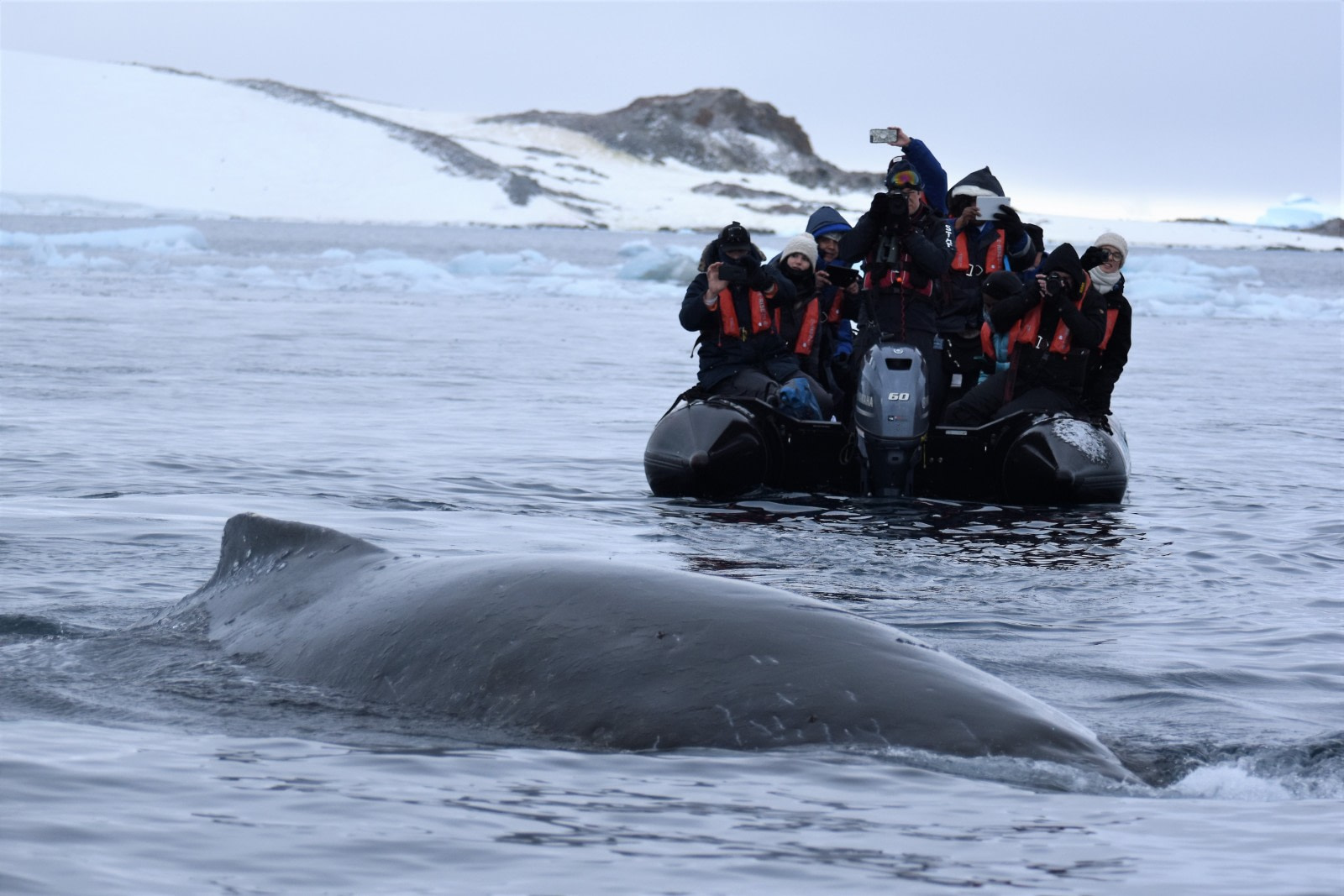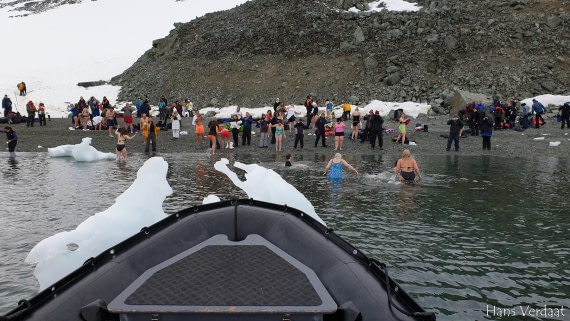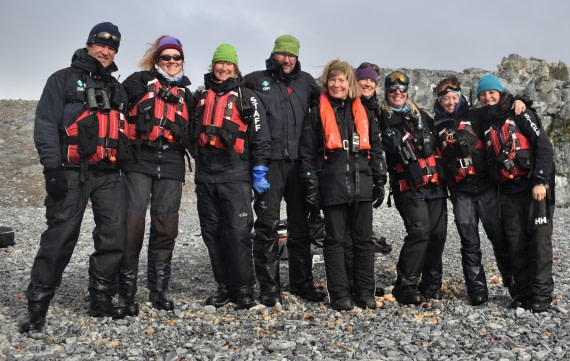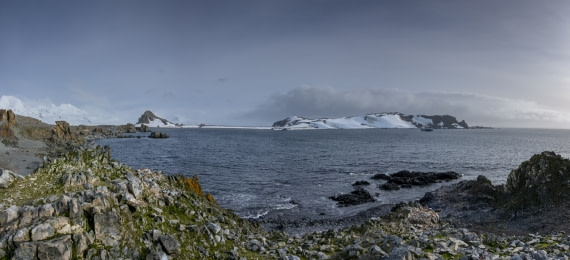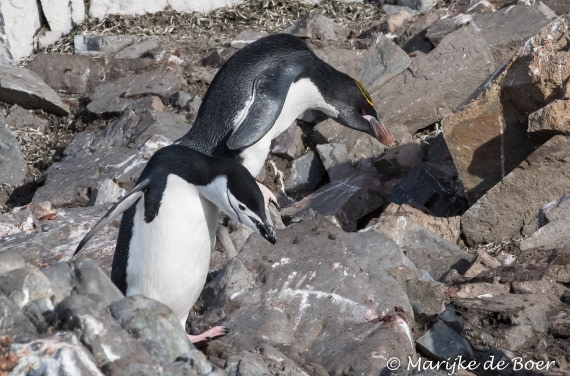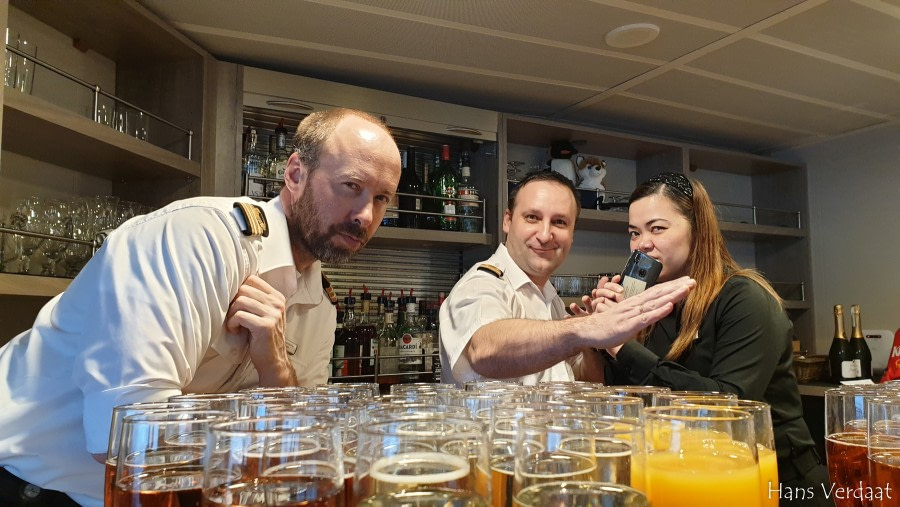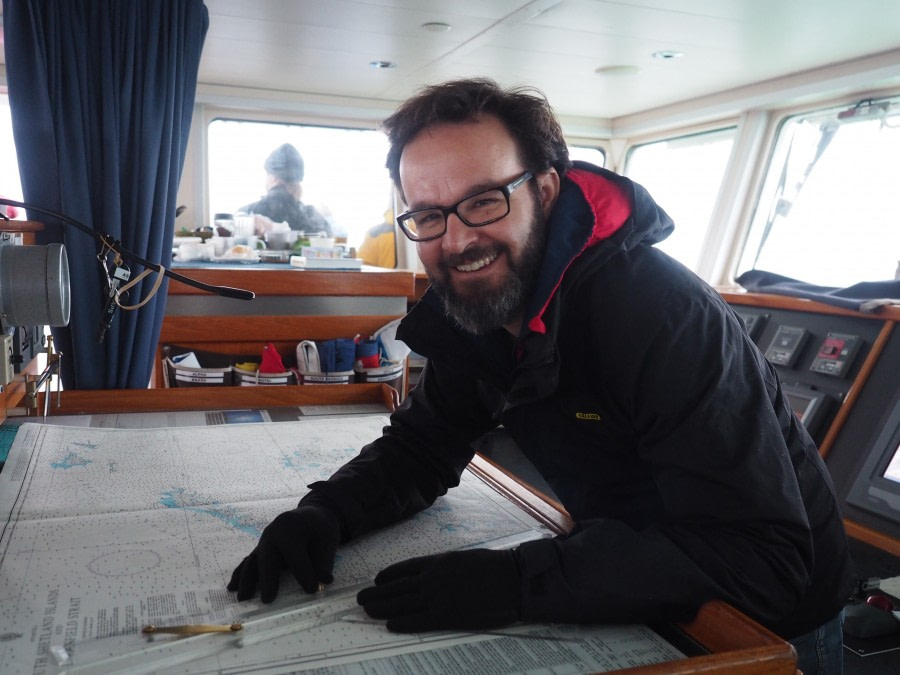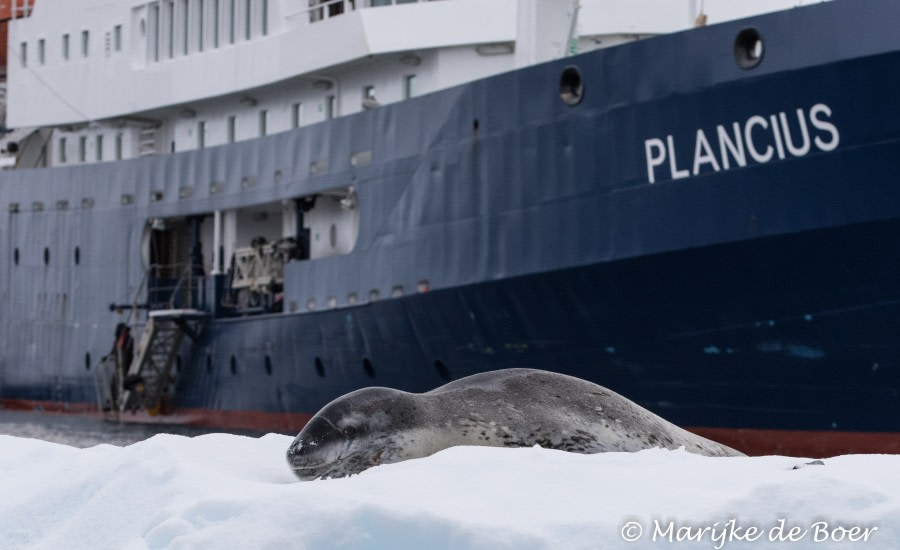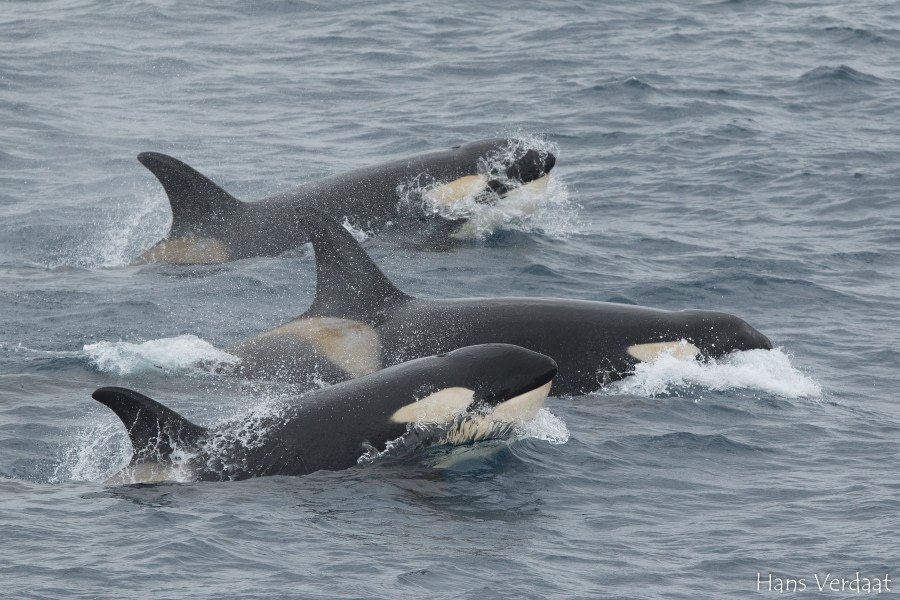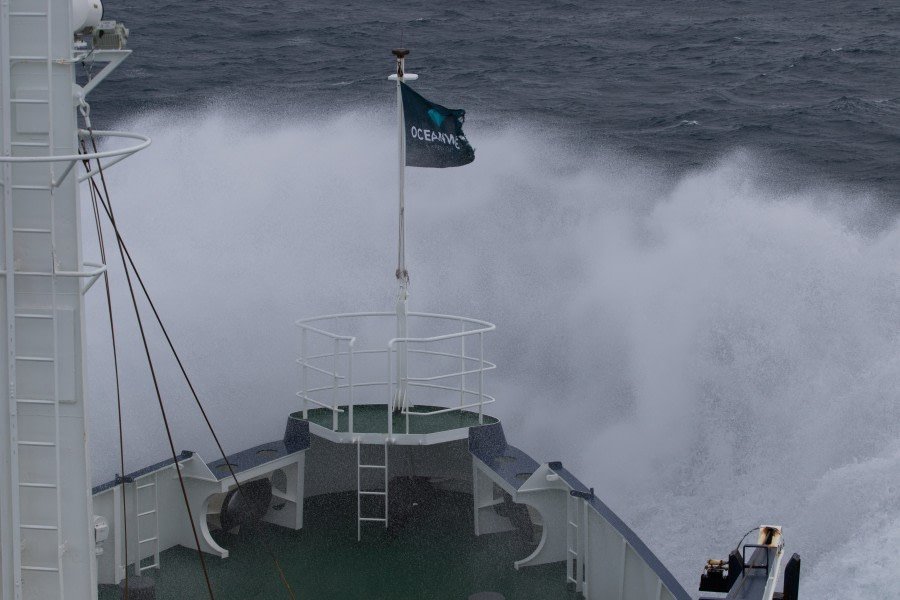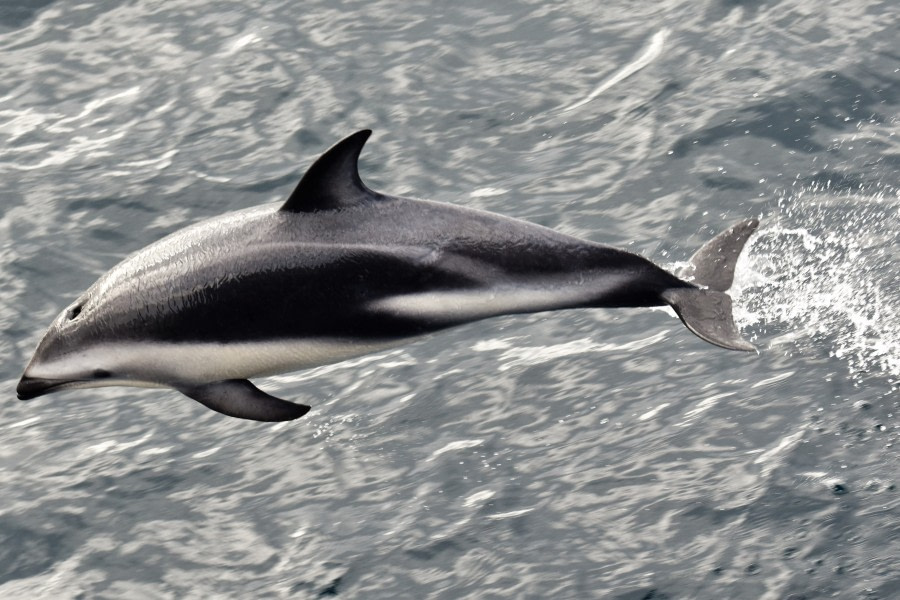| Datum: |
25.03.2019 |
| Positie: |
64°40’S/062°36’W |
| Wind: |
Light Air |
| Weer: |
Snow |
| Luchttemperatuur: |
+1 |
Our first excursion off the ship! We were getting everything all together this morning, both zodiac cruising and also a shore landing. The first six boats dropped their passengers on shore, then returned to the ship to pick up the second group of passengers for a zodiac cruise. The cruising action started straight off the bat with humpback whales waiting at the gangway as the first attraction! And it didn’t stop there. This is a busy time of year for leopard seals with all the juvenile penguins just learning to swim and leaving shore for the first time. One leopard was viewed playing and eating on a fresh kill, and then there were several giant petrels picking at a leftover carcass floating out in the bay. There was even a “cute” juvenile leopard seal hauled out on an ice floe … but then there were a couple of not-so-cute adults that got very curious and intimate with a couple of zodiacs—closely swimming around the boats and then unexpectedly one bit the rear pontoon of one and the keel underneath of another! This is an active time of year and certainly their top-of-the-food-chain hormones were showing themselves in this behaviour. The whales were not to be set aside, however, they were quite social and spending lots of time cruising closely to a couple of zodiacs, what amazing wildlife behaviour experience we had for the morning!
For the landing, everyone was excited stepping ashore on Cuverville Island—the first glimpses of (live) penguins up close and personal. The gentoo did not disappoint, going about their daily rhythm of feeding, bathing, squabbling, flipper flapping, and all sorts of other antics. Walking through the snow along the red-pole-marked route took us to a viewpoint over one penguin rookery where we could also see the Plancius drifting out in the channel. Watching the late-season dynamics of rookery life was interesting—some nest building practice as well as some attempts at courtship behaviour … maybe more practice now means a better mate option next season! The other side of the landing offered a shore-side view of colony life, with many newly moulted chicks having a bathing session, perhaps trying out the water for the very first time. They seemed to like it, getting in and wiggling around and chatting to one another the whole time. Even though a leopard seal was seen patrolling the outer area of the beach it seemed that the shallow water and band of brash ice were protection enough for the youngsters to have a relaxed swim session. In the background, the adult moulters just looked miserable in their solitary spots higher on the beach, as if they had “been there done that” and just wanted to get the whole process over with. The skua flying overhead and calling to each other up on the cliff-sides were a reminder that it’s not too late in the season for them to score a meal … the few smaller, still-downy chicks might still become a skua snack before the winter sets in for good. Turning back around to the beach to watch the freshly moulted chicks again, we were treated to a special show. It began to snow, big fat flakes—and what a sight! The chicks didn’t seem to be sure what was happening. They all were looking upwards at the sky, looking at the flakes, poking their bills here and there … and then started trying to catch the snowflakes … just like when we were kids! One chick even fell over it its exuberant attempt at grabbing a snowflake out of the air.
With the change in weather it was time for everyone to return home to the Plancius, for a hot drink, a good lunch, and to get ready for the afternoon landing on Danco Island. Just around the corner and down the Errera Channel we went, and everyone came ashore for the land-based afternoon adventure. Many folks were keen to try out the snowshoes for hiking up the hill, others were content to stay closer to the beach and have some quiet time watching more of the gentoo channel on the “Antarctica Live” channel. For one couple, their special quiet time included getting married on the beach! Not many people can say they had gentoo penguins in attendance at their wedding ceremony.
For the majority, however, Danco was all about a hike up the hill. The snow was fresh and the hill was steep. Luckily there was a nice viewpoint and penguin rookery halfway up, providing a nice overview of the ocean below, the beautiful bands of ice, and the misty craggy mountains in the distance. Further up the hill, the next point of interest was a wide penguin highway, which even this late in the season was still seeing quite a lot of action with penguins going down to feed or bathe and others coming back up the hill fresh from a wash or with a gullet full of krill for their almost-grown chicks. Because of the fresh snow, some of the downhillers seemed to find tobogganing easier than walking (especially when being chased from behind!) which provided a lot of entertainment for the humans standing by to watch. Finally, at the top of the hill we found a welcome flat spot to rest, catch our breaths, and take in the scenery.
The fog came and went, adding to the mystique of our surroundings. As people settled in after taking their “hero” photos, one by one the silence descended until finally all we could hear were the gentoo calling, the skua screeching, and whales blowing in the distance as we looked out over the calm, icy waters below. But the afternoon wasn’t over yet. What proper way to end the first Antarctic day but with a polar plunge?! Back down to the beach we did that crazy thing that will end up being one of the most talked about events of the whole trip. How can you explain what it’s like to take off perfectly warm clothes (layers and layers of them!) when it’s just a few degrees above freezing, and then with (mostly) sound mind and bodies walking (running?) into literally freezing water to take a dip. Who does that?! But now those hardy plungers have photos to prove it, if not the memories of the brain freeze that occurred after they dunked their heads. And then it was done, staggering out of the water on the uneven boulders underfoot, to dry off and get clothes on as quickly as possible. But once the adrenaline was flowing, many probably didn’t feel as cold as they’d expected … especially not after once back on board with a hot chocolate in hand. What a way to end our first day.
People were buzzing at the bar where we were going to meet together for recap … but the whale activity was so intense around the ship that we postponed our get-together to enjoy watching. It was hard to know where to look, humpbacks were literally surrounding the ship. Quite an incredible day. It was all Michael could do to get folks to go to dinner, but with the fine food on offer from Khabir and team people finally let their stomachs get the better of them and headed to the dining room to share stories and highlights from the incredibly eventful first day in Antarctica.
